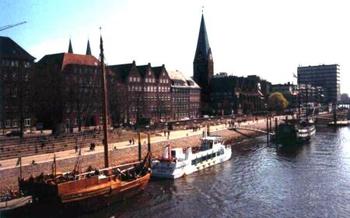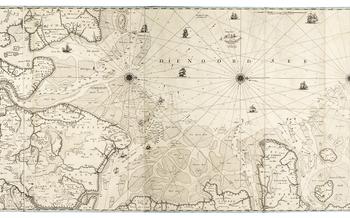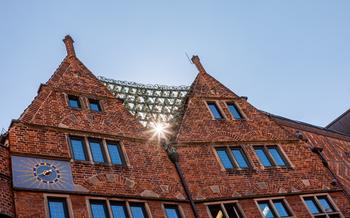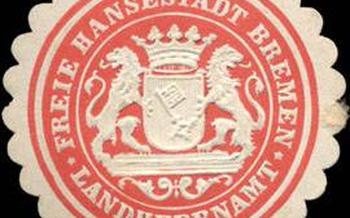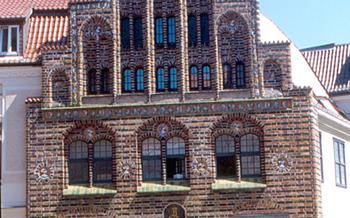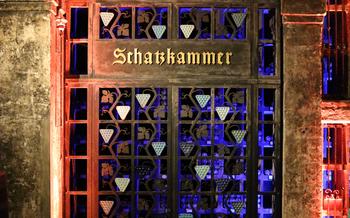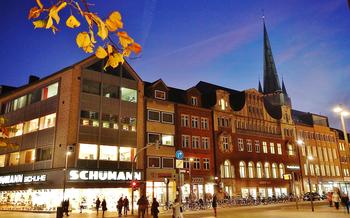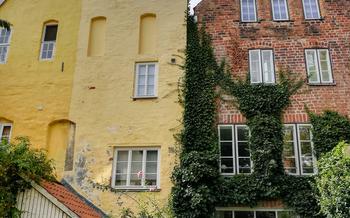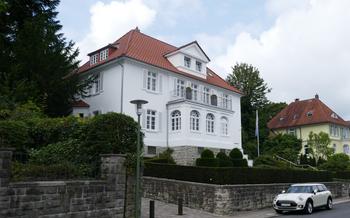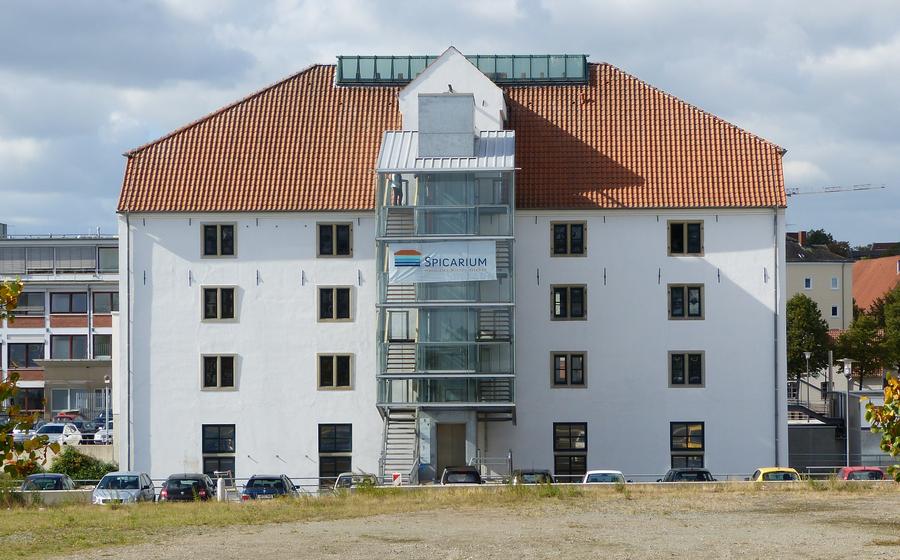
Spicarium
- The Spicarium: A Journey Through Bremen’s Maritime History
- Location and Accessibility
- Opening Hours and Admission Fees
- Guided Tours and Audio Guides
- Exhibitions and Displays
- Ship Models and Artifacts
- Maritime Trade and Commerce
- Hanseatic League and Bremen
- Shipbuilding and Seafaring
- Exploration and Discovery
- Maritime Art and Culture
- Educational Programs and Workshops
- Gift Shop and Souvenirs
- Accessibility for Visitors with Disabilities
- Insider Tip
The Spicarium: A Journey Through Bremen’s Maritime History
The Spicarium, an iconic landmark in Bremen, Germany, is a treasure trove of maritime history and cultural heritage. Step into this historic building, and embark on a captivating journey through the city’s rich seafaring past. Once a warehouse storing valuable spices and exotic goods, the Spicarium now stands as a testament to Bremen’s pivotal role in maritime trade and exploration. Its impressive facade, adorned with intricate carvings and sculptures, hints at the stories and adventures that lie within. Inside, visitors are greeted by a world of maritime wonders, where interactive exhibits, historic artifacts, and ship models bring the past to life.
Location and Accessibility
The Spicarium is strategically situated in the heart of Bremen's historic district, making it easily accessible by various transportation options. Its exact address is Am Speicher XI 8, 28217 Bremen, Germany. To reach the museum conveniently, visitors can utilize public transportation, with the nearest bus stop, "Speicher XI," located just a short walk away. For those arriving by car, there are several parking garages nearby, including the "Tiefgarage Am Speicher XI" and the "Parkhaus Mitte." The Spicarium is committed to inclusivity, ensuring accessibility for visitors with disabilities. The entire museum is wheelchair accessible, and special guided tours are available upon request. Additionally, audio guides with closed captions and sign language interpretation enhance the experience for visitors with hearing or visual impairments.
Opening Hours and Admission Fees
The Spicarium is open to the public from Tuesday to Sunday, with slightly different hours on each day. During the week, the museum is open from 10:00 AM to 5:00 PM, while on weekends, it remains open until 6:00 PM. Visitors are advised to check the museum's official website for any changes or special closures before planning their visit.
Regular admission fees apply for adults, children, and families. For adults, the entrance fee is set at 9 euros, while children between the ages of 6 and 17 are charged a reduced rate of 5 euros. Families with two adults and two children can purchase a family ticket for 20 euros.
Discounts are available for students and seniors, who can enjoy a reduced admission fee of 7 euros. It is worth noting that the Spicarium offers free admission to all visitors on the first Sunday of every month.
Online ticket booking is highly recommended, especially during peak tourist season or for larger groups. Visitors can conveniently purchase tickets through the museum's website and choose a specific time slot to avoid waiting in long queues.
Guided Tours and Audio Guides
The Spicarium offers guided tours in various languages to enhance visitors' understanding of the exhibits and Bremen's maritime history. Advance booking for guided tours is recommended, as they provide a more in-depth and personalized experience. Additionally, audio guides are available for rent, allowing visitors to explore the museum at their own pace and in their preferred language. The audio guides offer insightful commentary and explanations, bringing the exhibits to life.
Exhibitions and Displays
The Spicarium is home to a diverse array of exhibitions and displays that delve into Bremen’s rich maritime history. Permanent exhibitions showcase the city’s role as a major trading hub, its membership in the Hanseatic League, and its contributions to maritime exploration and discovery. These exhibitions feature a wealth of artifacts, documents, and interactive displays that bring the past to life.
Special exhibitions, which change on a regular basis, explore various maritime-related topics in greater depth. These exhibitions might focus on specific voyages, shipwrecks, maritime technology, or the lives of notable seafarers. Visitors can expect to see rare artifacts, immersive multimedia presentations, and hands-on activities that enhance their understanding of these maritime themes.
Interactive displays and hands-on activities are a hallmark of the Spicarium experience. Visitors can try their hand at navigating a ship using traditional instruments, load and unload cargo, or explore the depths of the ocean through virtual reality. These interactive elements make learning about maritime history fun and engaging for visitors of all ages.
Multimedia presentations and documentaries provide additional insights into Bremen’s maritime heritage. Visitors can watch short films about the city’s shipbuilding industry, the Hanseatic League, or the voyages of famous explorers. These audiovisual presentations offer a dynamic and immersive way to learn about the past and its impact on the present.
Ship Models and Artifacts
The Spicarium boasts an impressive collection of historic ship models, meticulously crafted to showcase vessels from different eras and regions. These models, ranging from ancient sailing ships to modern cargo vessels, provide a glimpse into the evolution of shipbuilding and maritime technology. Visitors can admire the intricate details of each model, from the rigging to the sails, and learn about the specific features and purposes of these vessels.
In addition to ship models, the museum displays a wide array of maritime artifacts, offering a tangible connection to Bremen’s seafaring past. Navigation tools such as compasses, sextants, and astrolabes demonstrate the ingenuity and precision required for sea voyages. Visitors can also examine anchors, cannons, and other equipment used on ships, providing insights into the challenges and realities of life at sea.
Interactive exhibits bring these artifacts to life, allowing visitors to engage with the material and understand their functions. Hands-on displays simulate the use of navigation instruments, allowing visitors to experience the challenges of determining their position on the open sea. Other interactive exhibits demonstrate the operation of ship cannons and the process of loading and firing these powerful weapons.
Through these ship models and artifacts, the Spicarium invites visitors to step back in time and immerse themselves in the world of maritime exploration, trade, and warfare. The stories and anecdotes associated with these objects bring the history of Bremen’s seafaring heritage to life, offering a glimpse into the lives of the sailors and merchants who shaped the city’s destiny.
Maritime Trade and Commerce
Bremen's strategic location on the Weser River and its access to the North Sea made it a major trading port from the Middle Ages onwards. The city's merchants established trading links with countries all over Europe, as well as with far-flung destinations such as India and China. Bremen's maritime trade flourished during the Hanseatic League period, when the city was a member of this powerful alliance of trading cities.
The Spicarium showcases the role of Bremen as a trading hub through interactive displays that simulate trading activities. Visitors can learn about the different goods that were traded, such as spices, textiles, and metals, and how these goods were transported and sold. The museum also highlights the impact of maritime trade on Bremen's economy and development, and how the city's wealth and prosperity were built on its maritime connections.
One of the most fascinating exhibits in the Spicarium is a replica of a medieval trading ship. Visitors can climb aboard the ship and experience what it was like to sail the high seas in search of new trading opportunities. The ship's captain and crew are dressed in period costumes and are happy to answer questions about life on board a trading vessel.
The Spicarium is a must-visit for anyone who is interested in learning more about Bremen's maritime history and its role as a major trading port. The museum's interactive exhibits and displays bring the past to life and offer a fascinating glimpse into the world of maritime trade and commerce.
Hanseatic League and Bremen
Bremen's maritime history is inextricably linked to the Hanseatic League, a powerful alliance of trading cities that dominated the Baltic and North Seas from the 13th to the 17th centuries.
As a member of the Hanseatic League, Bremen played a vital role in the economic and political development of the region.
The city's merchants engaged in extensive trade with other Hanseatic cities, as well as with countries across Europe and beyond.
Bremen's contributions to the League's success included its strategic location on the Weser River, its skilled workforce, and its strong shipbuilding industry.
The city also served as a center for Hanseatic diplomacy and arbitration, and its representatives played a leading role in shaping the League's policies and regulations.
To this day, Bremen proudly preserves its Hanseatic heritage. The city's coat of arms features a Hanseatic cog, and the Hanseatic cross can be seen throughout the city, adorning buildings, fountains, and even manhole covers.
The Spicarium's exhibits on the Hanseatic League provide visitors with a fascinating glimpse into this important chapter of Bremen's history.
Shipbuilding and Seafaring
Bremen's maritime history is closely intertwined with shipbuilding and seafaring. The city has a long tradition of constructing ships, dating back to the Middle Ages. In the 19th century, Bremen became a major shipbuilding center, with several renowned shipyards operating in the city. One of the most famous shipyards was the AG Weser, which built many notable vessels, including the passenger liner SS Bremen and the cargo ship Cap San Diego.
The Spicarium showcases the history of Bremen's shipbuilding industry through interactive exhibits and displays. Visitors can learn about the different types of ships that were built in Bremen, the shipbuilding techniques that were used, and the famous shipyards that operated in the city. The museum also tells the stories of Bremen sailors who embarked on adventurous voyages around the world. Visitors can hear firsthand accounts of their experiences at sea and learn about the challenges and hardships they faced.
Exploration and Discovery
Bremen played a significant role in maritime exploration and discovery, with expeditions launched from the city venturing to distant lands and contributing to geographical knowledge. The Spicarium showcases this aspect of Bremen’s maritime history through interactive exhibits and displays. Visitors can trace the routes of Bremen’s explorers on an interactive map and learn about their contributions to the world’s understanding of geography. The museum also features stories of Bremen sailors and their adventures at sea, providing a glimpse into the lives of these intrepid individuals who braved the oceans in search of new frontiers.
Maritime Art and Culture
The Spicarium also houses a remarkable collection of maritime-themed art and cultural artifacts. Admire stunning paintings that capture the beauty and power of the sea, intricate sculptures that depict seafaring adventures, and delicate crafts that showcase the skills of maritime artisans. Explore a gallery of historic maps and charts that trace the routes of Bremen's seafaring vessels, and marvel at the precision and artistry of these navigational tools. Attend cultural events and workshops that celebrate Bremen's maritime heritage, such as lectures by renowned maritime historians, exhibitions of maritime-inspired artwork, and hands-on workshops on traditional maritime crafts. Immerse yourself in the rich cultural tapestry of Bremen's seafaring past through these captivating exhibits.
Educational Programs and Workshops
The Spicarium offers a range of educational programs and workshops designed to engage visitors of all ages in the fascinating world of maritime history and culture. School groups and youth organizations can participate in interactive learning experiences that delve into various maritime topics, such as shipbuilding, navigation, and exploration. Hands-on workshops provide opportunities for students to build their own model ships, create nautical crafts, and learn about the science behind seafaring. During school holidays, the Spicarium organizes themed summer camps and holiday programs that combine fun activities with educational content, allowing children to embark on exciting maritime adventures. These programs are designed to inspire curiosity, foster creativity, and promote a deeper understanding of the maritime heritage that shapes our world.
Gift Shop and Souvenirs
The Spicarium’s gift shop is a treasure trove of maritime-themed souvenirs and mementos. Visitors can find unique gifts for friends and family, or a special keepsake to remember their visit to the museum. The shop offers a wide range of items, including books, postcards, toys, and replicas of historic artifacts.
One of the most popular souvenirs is the miniature model of the Hanseatic cog, a type of sailing ship that was used for trade in the Middle Ages. Visitors can also purchase replicas of other historic ships, such as the Bremen cog and the Mayflower.
For those interested in maritime history, the gift shop offers a selection of books and DVDs on a variety of topics, including the Hanseatic League, shipbuilding, and exploration. There are also educational materials for children, such as activity books and puzzles.
The Spicarium’s gift shop is a great place to find a unique and meaningful souvenir of your visit to Bremen.
Accessibility for Visitors with Disabilities
The Spicarium is committed to providing an inclusive and accessible experience for all visitors. The museum is fully wheelchair accessible, with ramps, elevators, and accessible restrooms throughout the building. Visitors with disabilities can also take advantage of special guided tours that are tailored to their needs. These tours provide additional information and assistance, ensuring that everyone can fully enjoy the museum's exhibits.
In addition, the Spicarium offers audio guides with closed captions and sign language interpretation, making the exhibits accessible to visitors who are deaf or hard of hearing. Interactive exhibits have also been designed with accessibility in mind, featuring touchscreens, audio descriptions, and tactile elements that can be enjoyed by visitors of all abilities.
Insider Tip
To make the most of your visit to the Spicarium and ensure a smooth experience, here are some insider tips to keep in mind:
-
Advance Booking: To avoid long queues and disappointment, especially during peak tourist season, it's advisable to book your tickets online in advance. This allows you to secure your spot and choose your preferred time slot.
-
Guided Tours: For a more immersive and informative experience, consider booking a guided tour. Knowledgeable guides can provide in-depth insights into the exhibits, share captivating stories, and answer your questions. Guided tours are available in various languages, so you can choose the one that suits you best.
-
Explore the Surroundings: The Spicarium is strategically located in the heart of Bremen's historic district, surrounded by an array of other attractions and landmarks. After your visit, take some time to explore the charming streets, visit nearby museums, or indulge in the local cuisine at one of the many restaurants and cafes in the area.
-
Interactive Map: To help you navigate the surrounding area and discover other points of interest, make use of the interactive map provided by the Spicarium. This map highlights nearby attractions, transportation hubs, and other essential amenities, ensuring a seamless and enjoyable experience.
